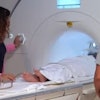Bone age assessment is frequently performed in pediatric radiology, and the most commonly used technique is the Greulich and Pyle (GP) atlas-based method. While the GP method is a low-cost and widely available evaluation, it's also time-consuming and subjective -- making it highly dependent on the individual ability and experience of the radiologist, according to Dr. Christian Booz from the Institute for Diagnostic and Interventional Radiology in Frankfurt. Furthermore, there are also long intervals between reference standards in the atlas.
A number of CADx systems have been developed to improve the process of assessing bone age. The German group evaluated the BoneXpert (Visiana) software, which automatically determines the age of 13 bones by analyzing radiographs of the left hand and wrist. The researchers compared the performance of the software with the GP method, and they also reviewed the influence of the carpal bones on bone age assessment.
In a retrospective analysis of 305 patients, the group found no difference between the two methods for mean total bone age assessment values. This implies that the software provides reliably high accuracy and precision, Booz said.
In addition, the statistical analysis also implied that bone age assessment of the carpal bones is more challenging and leads to lower precision and interreader agreement than analyzing the bone age of other bones of the hand and wrist, he said.
"Thus, a method which assesses [bone age] without analyzing the carpal bones may be more accurate and meaningful than methods including the carpals in the analysis, like the GP method," Booz told AuntMinnie.com.
For more information, attend this presentation on Wednesday.


















